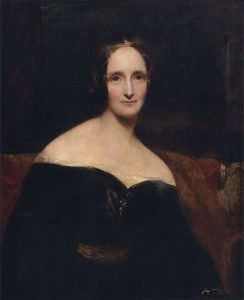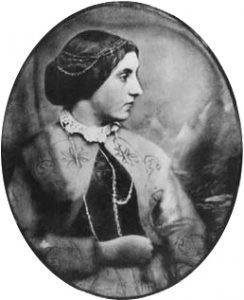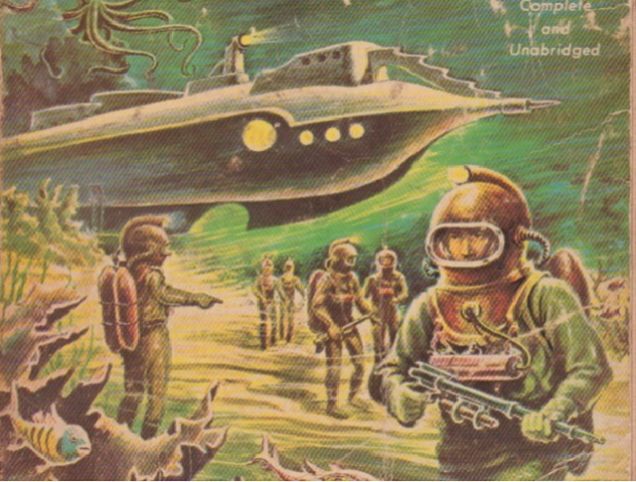Last week, we covered the early precursors to one of the world’s most beloved genres of TV, movies, and literature: Science Fiction, or SciFi. We covered works like Gilgamesh, Mandevilles Travels, Utopia, and Kepler’s Somnium.
Today, we’re discussing the emergence of science fiction as its own genre, starting with the one story that the whole of SciFi can trace its lineage back to, all the way up to the late 19th century and the emergence of Jules Verne and H.G. Wells.
Science fiction saw a boom in the 19th century. The very first electronics, like the electric relay in 1835 and the telegraph in 1837, and the first functional light bulb in 1878 were starting to appear. It was an era of rapidly accelerating scientific discovery and invention. Mathematics, physics, chemistry, biology, and electricity were all starting to leap to the forefront, paving the way for the 20th century. In Great Britain, the Industrial Revolution began, and the British Empire was beginning to spread its long arms over the world, collecting nation after nation as it went. People were hearing about far-off lands, now. Stories from explorers and archaeologists and treasure-hunters were being published in newspapers and penny-books, pushed to the forefront of the public’s imagination. That, mixed with the leaps in scientific discovery created an environment where science fiction could flourish.
The Mother of Science Fiction
“[Frankenstein is] the first seminal work to which the label SF can be logically attached”- Brian Aldiss

PHOTO: wikimedia
We couldn’t talk about science fiction without talking about where it all began. There’s one story that all science fiction can trace its roots back to, and that’s Mary Shelley’s groundbreaking work: Frankenstein. Now, most people may think of Frankenstein as part of the Gothic horror genre, but don’t be fooled. It’s the first work of fiction that we can definitively put in the category of “mad scientist” literature, and grapples with themes that have been a part of SF for centuries, such as the nature of the human condition and the meaning of life.
Science fiction is often talked about as if it’s a genre dominated by men, but that simply isn’t true. Science fiction was started by a woman in 1818, and that’s pretty fantastic.
Other Early 19th Century Works

Jane C. Loudon. PHOTO: wikimedia
A few years later, in 1827, Jane C. Loudon wrote The Mummy!: Or a Tale of the Twenty-Second Century. It’s a fantastical story in which the mummified Pharaoh Cheops is revived in to a futuristic world plunged into political crisis. It imagines the future as a place with migrating houses and gas-flame jewelry, and Cheops is revived completely using science, which works more like magic than actual science, granted, but it works much in the same way Shelley’s Frankenstein does.
In 1836, a Russian named Alexander Veltman published The Forebears of Kalimeros: Alexander, son of Philip of Macedon. In it, the main character travels to ancient Greece on the back of a hippogriff, meeting characters like Aristotle and Alexander the Great. He then returns to his own time in the 19th century. It’s the first known Russian science fiction novel, and the first novel ever to use the time travel trope.
Another notable early 19th century work was written by Victor Hugo, of all people. 19th century-ers were fascinated by the trajectory of human progress, Victor Hugo was no exception. He wrote a work called The Legend of the Centuries. In it, the greatest work of all human accomplishment, a ship called Leviathan, has crashed, leaving humanity stranded. It’s a story about humanity’s quest for Utopia, and it’s been foundational to the world of Science Fiction.
Jules Verne & H.G. Wells

PHOTO: ursa.browntth.com
Of course, you couldn’t talk about science fiction and leave out its greats. Jules Verne and H.G. Wells are, arguably, two of the most famous of the 19th century’s, and, indeed, Science Fiction’s writers. I hardly have to tell you what they wrote. In these two men, the European style of science fiction as we know it today began. Here, too, we see the dichotomy that has perservered in science fiction today: how realistic should it be? How far can we suspend our audiences’ belief?
In Jules Verne, we find fantastical adventure stories that combine man’s search for the unknown with the newfangled technology the Industrial Revolution provided him. His stories were a tremendous success, and he was, essentially, the world’s first full-time science fiction writer. Verne was a firm believer in presenting realistic technology in his stories, and often went in-depth explaining how his characters got where they were. Wells was another breed entirely. He’s best remembered for his sweeping, often abstract plotlines and characters that he used to criticize English society. In his story, The War of the Worlds, published in 1898, he doesn’t explain his technology as well as Verne would have if he’d written it, and he resolves his story by a deus ex machina. Both of these writers are considered some of the best SF has to offer, and yet they differ completely on what role science had to play in their story. It’s a conflict that continues in the SF genre to this day.
Thanks for joining us on our tour of the history of science fiction! Next week, we’ll be looking at what the 20th century contributed to the genre, and how the genre began to impact the collective human psyche.


